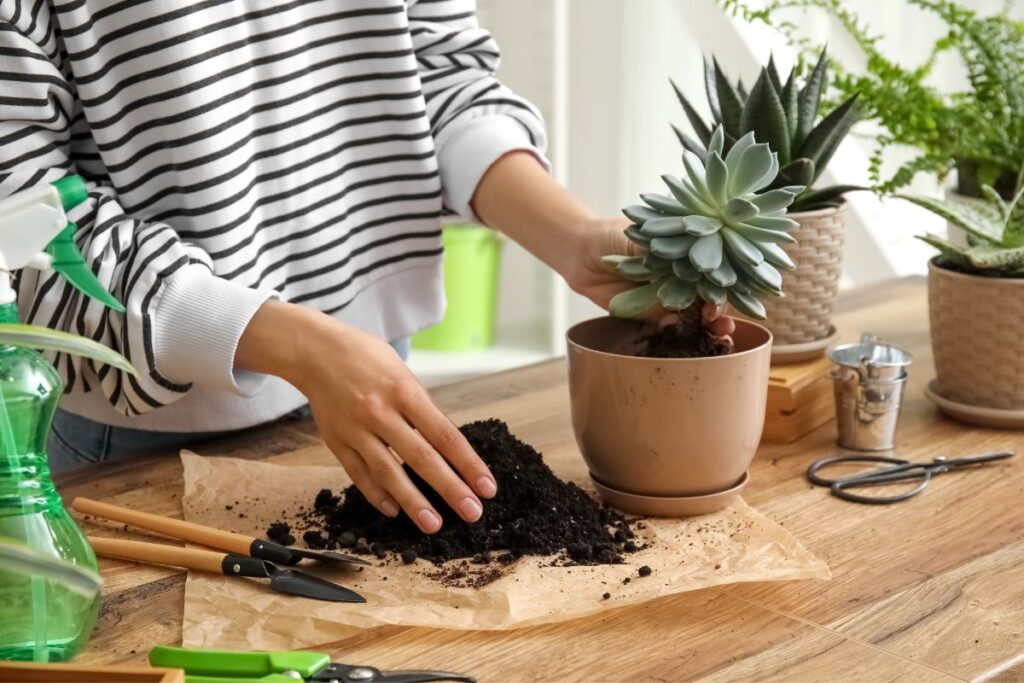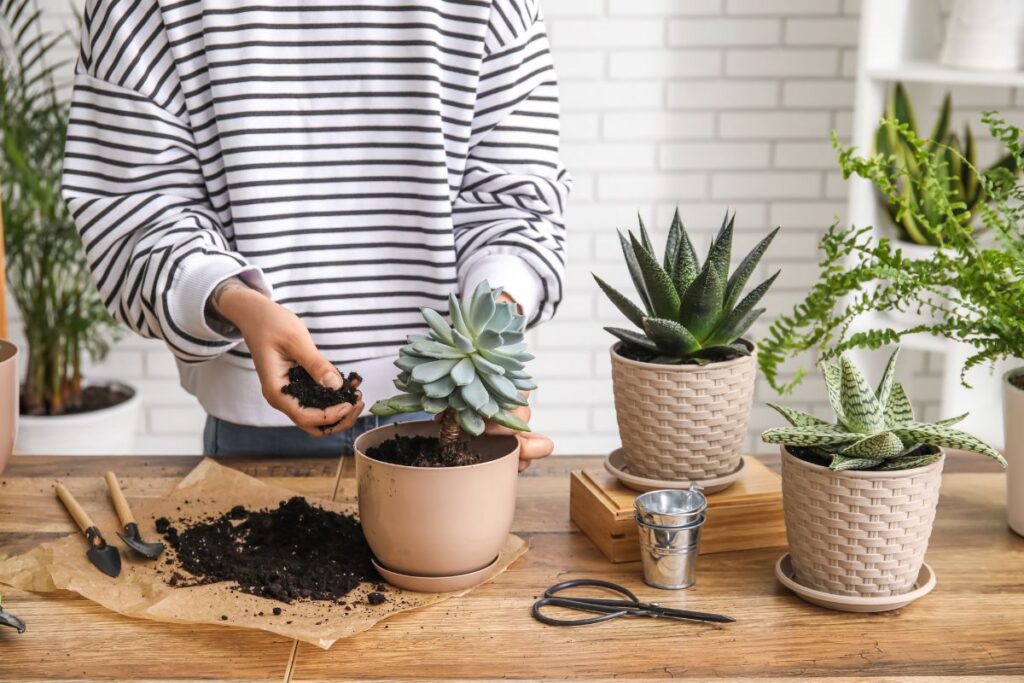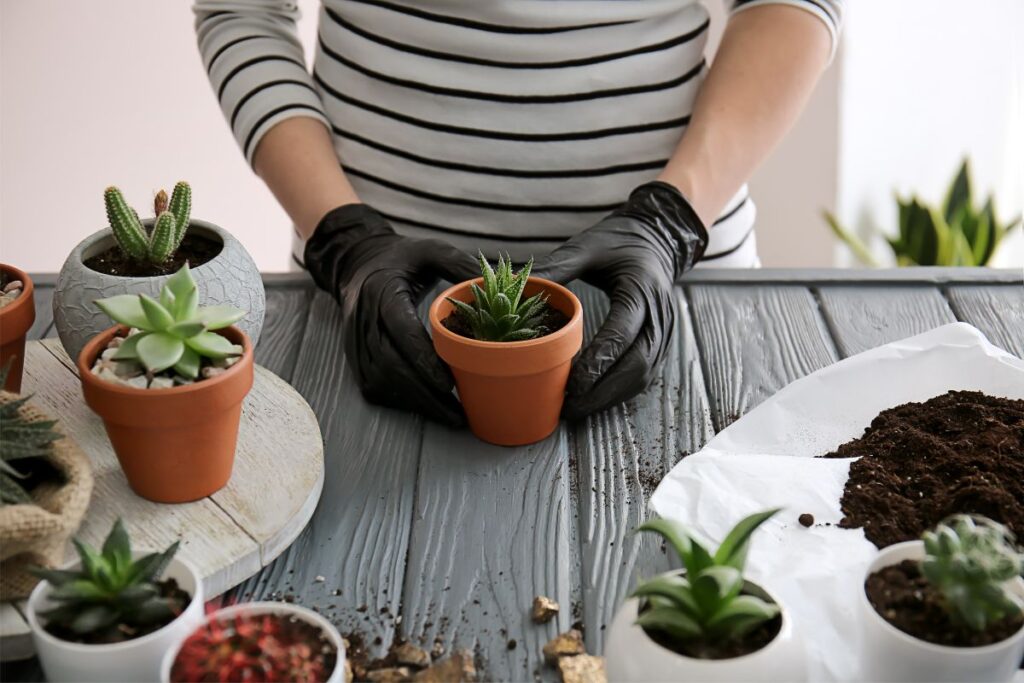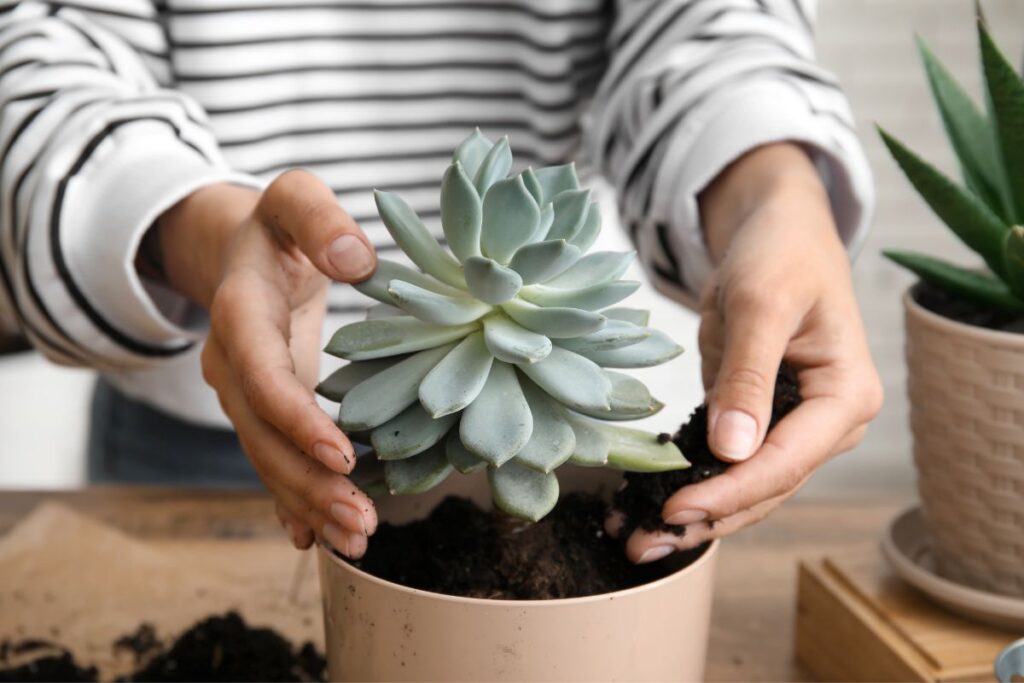Replanting Succulents: The Simple Trick for Explosive New Growth
Are your succulents looking a little sad and stunted lately? Maybe their growth has slowed to a crawl or their colors have gotten dull. Well, have no fear! There’s an easy fix that can wake up those sleepy succulents and turbocharge their growth into the lush, vibrant plants you’ve been dreaming of. The secret? Just replant them!
Replanting gives succulents a rejuvenating fresh start with fresh nutrients and more room for their roots to spread out. It’s like giving them a magical growth boost! And the process is so simple, you’ll be wondering why you didn’t do it sooner.

Here’s the step-by-step guide to replanting for explosive new succulent growth:
Contents
Step 1: Make or Buy the Perfect Soil
Succulents need a super well-draining soil or they can get diseased roots from too much moisture. The perfect blend is a mix of regular potting soil, coarse sand or perlite, and maybe some pebbles or bark pieces. You can buy pre-made cactus/succulent soil or make your own half-and-half blend.

Step 2: Pick the Prime Pot
Choose a pot or container with excellent drainage holes in the bottom so any excess water can escape. Unglazed terracotta is great for breathability, but plastic works too. Just go a size up from their current pot to give the roots more wiggle room.

Step 3: Prep by Gently Removing the Old Soil
Don’t just rip your succulent out! Lay the pot on its side and gently pull and shake the plant out, trying to keep the root ball intact as much as possible. Use a sculpting tool or chopstick to loosen compacted roots if needed.
Step 4: Get that Baby in its Fresh Digs

Half-fill the new pot with your perfect soil mix, then replant your succulent at the same depth as before. Pack the new soil in around the roots, leaving just the top peeking out. Simple as that!
Step 5: Water Moderately and Watch it Flourish
Give your newly replanted succulent a nice deep watering, allowing the excess to drain out the bottom. Then be patient, keep the soil just barely moist, and watch those vibrant colors pop right back and the explosive new growth pour in!
Replanting every year or two is key to keeping succulents thriving long-term. With just a little work, you can easily revive any struggling plant with this magical growth-boosting trick. Your succulent garden will be the lushest on the block! What are you waiting for?
